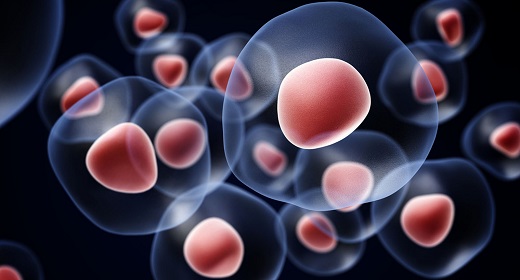by Dr. Andrew Weil: The nutritional composition of oil from the marijuana plant could be beneficial to your health.  To most people, Cannabis sativa is synonymous with marijuana, but the plant’s Latin name means the “useful hemp.” Species designated sativa (useful) are usually among the most important of all crops. In fact, the utility of hemp is manifold: the plant has provided human beings with fiber, edible seeds, an edible oil, and medicine, not just a notorious mind-altering drug.
To most people, Cannabis sativa is synonymous with marijuana, but the plant’s Latin name means the “useful hemp.” Species designated sativa (useful) are usually among the most important of all crops. In fact, the utility of hemp is manifold: the plant has provided human beings with fiber, edible seeds, an edible oil, and medicine, not just a notorious mind-altering drug.
In our part of the world, these other uses of hemp are no longer familiar. We rarely use hemp fiber and know little about hemp medicine. (Some cancer patients have found it to be a superior remedy for the nausea caused by chemotherapy, and some people with multiple sclerosis are grateful for its relaxant effects on spastic muscles.) Hemp seed is sometimes an ingredient in bird food; otherwise, edible products from Cannabis sativa are virtually unknown.
This may all change. In many parts of the country, promoters of hemp cultivation are working to educate people about the immense potential of this plant and to reintroduce it into commerce. They champion hemp as a renewable source of pulp for the manufacture of paper, as a superior fiber for making cloth, and as a new food that can be processed into everything from a milk substitute to a kind of tofu.
Hemp seeds contain 25% high quality protein and 40% fat in the form of an excellent quality oil. Hemp oil is just now coming on the market. Produced by the Ohio Hempery in Athens, Ohio, it will be sold through natural food stores in small, opaque bottles to be kept under refrigeration. It has a remarkable fatty acid profile, being high in the desirable omega-3s and also delivering some GLA (gamma-linolenic acid) that is absent from the fats we normally eat. Nutritionally oriented doctors believe all of these compounds to be beneficial to health.
Hemp oil contains 57% linoleic (LA) and 19% linolenic (LNA) acids, in the three-to-one ratio that matches our nutritional needs. These are the essential fatty acids (EFAs)-so called because the body cannot make them and must get them from external sources. The best sources are oils from freshly ground grains and whole seeds, but EFAs are fragile and quickly lost in processing. EFAs are the building blocks of longer chain fats, such as eicosapentaenoic (EPA) and docosahexaenoic acid (DHA) that occur naturally in the fat of cold-water fish like sardines, mackerel, salmon, bluefish, herring, and, to a lesser extent, tuna.
Adding these foods to the diet seems to lower risks of heart attacks because omega-3 fatty acids reduce the clotting tendency of the blood and improve cholesterol profiles. They also have a natural anti-inflammatory effect that makes them useful for people with arthritis and autoimmune disorders.
Health food stores stock many brands of EPA/DHA supplements in the form of fish oil capsules. I usually do not recommend them because I think it’s better to get your essential fatty acids in foods, and I worry about toxic contaminants in fish oil supplements. But what can you do if you choose, for one reason or another, not to eat fish? You can get some omega-3s in expeller pressed canola oil, the only common vegetable oil that contains them.
A much richer source is flax oil. Flax oil is pressed from the seeds of Linum utilitatissimum, the source of linen fiber and an oil better known in this country as linseed oil, the base for oil paints.
Linseed oil is usually classified as a “drying oil” rather than a food oil because its chemical characteristics cause it to combine readily with oxygen and become thick and hard. This tendency to harden on exposure to air quickly turns linseed oil rancid and unfit to eat, but makes it useful as a vehicle for pigment on canvas. (The word “canvas” by the way is a relative of “Cannabis,” because true canvas is made from hemp fiber.)
For dietary purposes flax oil must be pressed at low temperatures, protected from light, heat, and air, stored at cool temperatures, and used quickly once the containers are opened. Most flax oil is not delicious. There is great variation in taste among the brands currently sold in natural food stores, but the best of them still leaves much to be desired.
I have been recommending flax oil as a dietary supplement to patients with autoimmune disorders, arthritis, and other inflammatory conditions, but about half of them cannot tolerate it. Some say it makes them gag, even when concealed in salad dressing or mashed into a baked potato. These people have to resort to taking flax oil capsules, which are large and expensive.
Udo Erasmus, author of the classic book, Fats and Oils (Alive, 1986), [and Fats that Heal, Fats that Kill, The Complete Guide to fats, oils, cholesterol and human health, Second Printing of Fats and Oils, (Alive, 1996). This book is a fabulous resource on nutrition –ratitor] says that the problem is freshness. Unless you get flax oil right from the processor and freeze it until you start using it, it will already have deteriorated by the time you buy it. Hemp oil contains more EFAs than flax and actually tastes good. It is nutty and free from the objectionable undertones of flax oil. I use it on salads, baked potatoes, and other foods and would not consider putting it in capsules.
Like flax oil, hemp oil should be stored in the refrigerator, used quickly, and never heated. Unlike flax oil, hemp oil also provides 1.7% gamma-linolenic acid (GLA). There is controversy about the value of adding this fatty acid to the diet, but many people take supplements of it in the form of capsules of evening primrose oil, black currant oil, and borage oil. My experience is that it simulates growth of hair and nails, improves the health of the skin, and can reduce inflammation. I like the idea of having one good oil that supplies both omega-3s and GLA, without the need to take more capsules.
One of the questions that people are sure to ask about hemp oil is whether it has any psychoactivity. The answer is no. The intoxicating properties of Cannabis sativa reside in a sticky resin produced most abundantly in the flowering tops of female plants before the seeds mature. The main psychoactive compound in this resin is tetrahydrocannabinol (THC).
Strains of hemp grown for oil production have a low resin content to begin with, and by the time the seeds are ready for harvest, resin production has dropped even further. Finally, the seeds must be cleaned and washed before they are pressed. As a result, no THC is found in the final product.
A second question that people may ask is, “Is hemp oil illegal?” The oil itself is perfectly legal. Hemp seeds are allowed in commerce if they have been sterilized in some way to prevent germination. This is usually done by subjecting them to heat. At the moment, the Ohio Hempery is importing sterilized seeds from Canada and extracting the oil here, but it hopes to get some sort of exemption from this requirement in order to be able to use the freshest seeds possible in the future.
Obviously, there is a political dimension to the appearance of this product. For many years, Cannabis sativa has been stigmatized as a satanic plant and its cultivation has been prohibited. As an ethnobotanist interested in the relationships between plants and human beings, I have always felt that making plants illegal was stupid, especially when the objects of these actions are supremely useful plants like hemp. The plant is not responsible for human misuse of it.
The efforts of the Ohio Hempery and other groups to promote hemp cultivation are part of a campaign to rehabilitate this plant and change society’s view of it. Whether or not you wish to join that campaign, it must seem counterproductive to deny ourselves access to the many benefits that hemp offers. Of those, the gift of an edible oil with superior nutritional and therapeutic properties is one of the most important.
If you have a chance to try hemp oil, a long forgotten, newly rediscovered food, I think you will see why I am enthusiastic about it.
Andrew Weil teaches at the University of Arizona College of Medicine, has a private medical practice, and is the author of Natural Health, Natural Medicine.









































